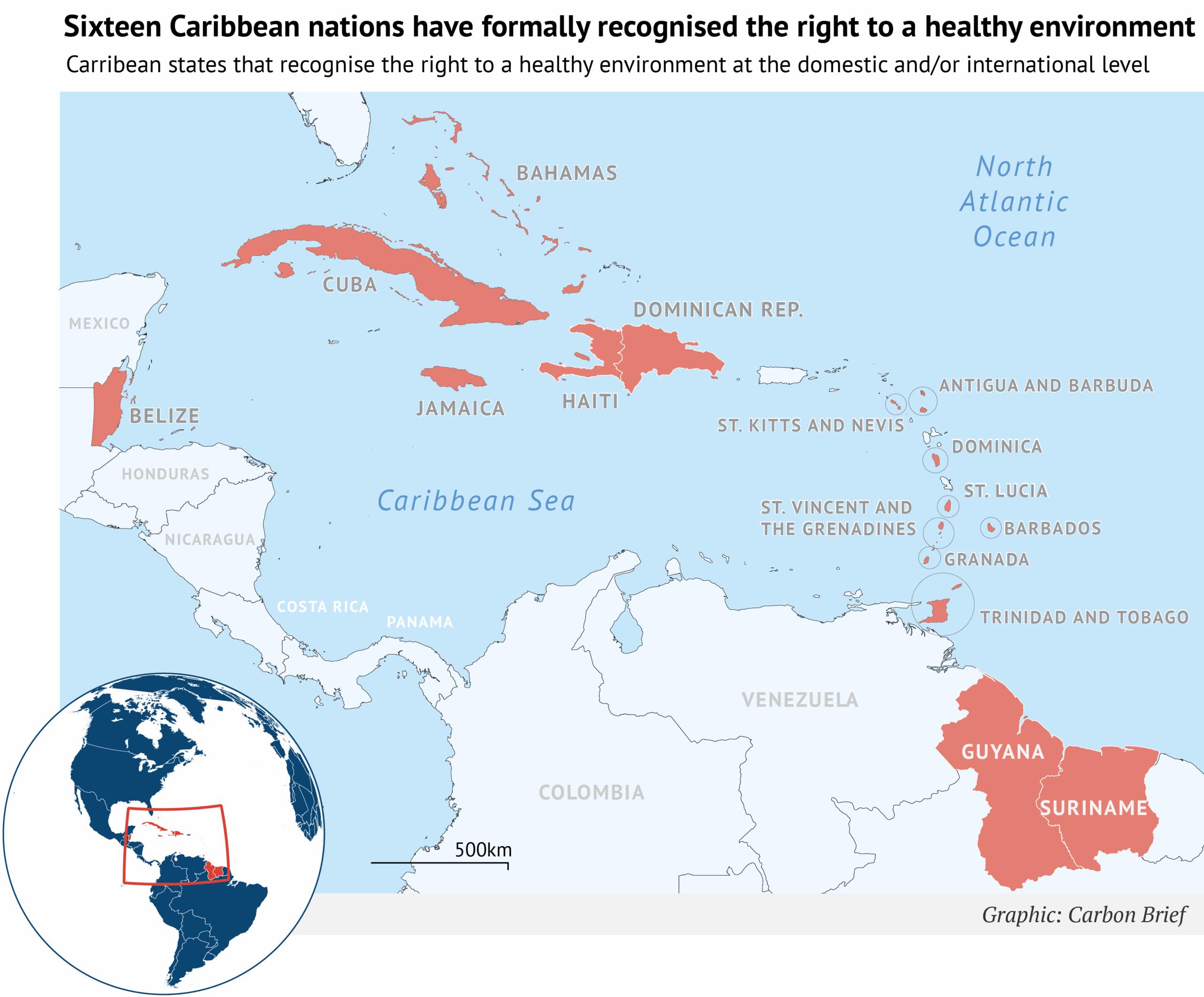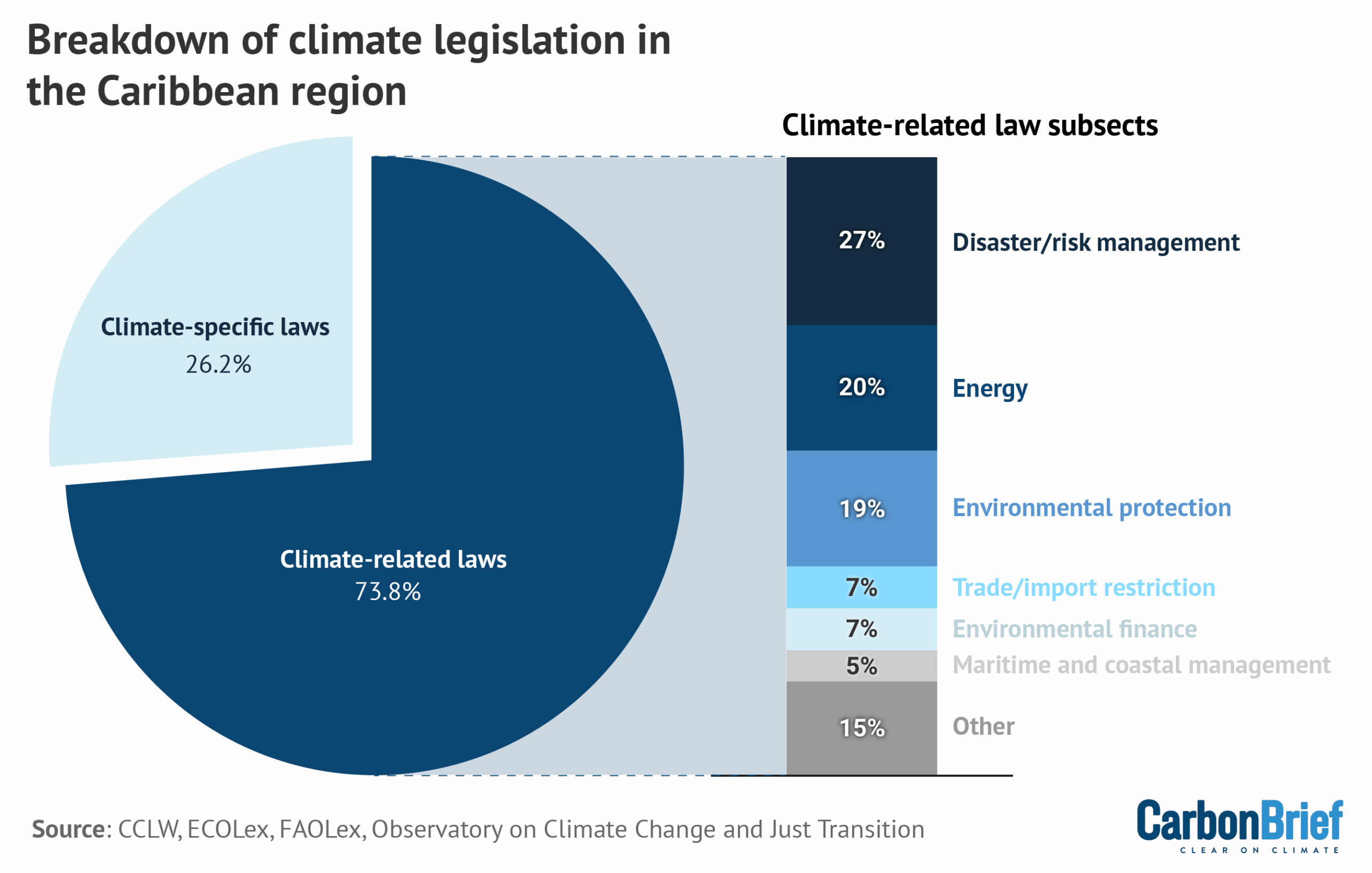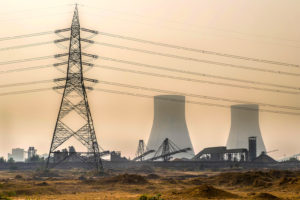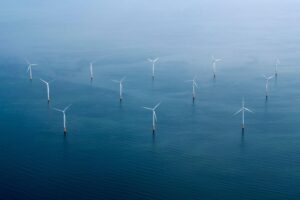The EU’s law to restore nature was given the green light by the European parliament this week.
The long-awaited “nature restoration” law aims to repair the EU’s damaged ecosystems over the next few decades.
The final vote on the law came amid farmer protests across the EU and, in response, rollbacks of some of the bloc’s other environmental plans.
The law became a focal point for misinformation in recent months and saw strong levels of opposition from different groups.
It passed through a final parliament vote on 27 February, with 329 votes in favour, 275 against and 24 abstentions – a larger margin of approval than a knife-edge vote last summer.
It now needs to be approved by the council of the EU before it can take effect.
In this Q&A, Carbon Brief explains the aims of the nature restoration law, the challenges it faced, its scientific backing and what it will mean for climate change and biodiversity loss in the EU.
- What is the EU nature restoration law?
- Will the law help the EU meet its climate and biodiversity goals?
- What is the scientific backing behind the law?
- What are the most contentious parts of the nature restoration law?
- What has been the reaction to the EU’s nature restoration law?
What is the EU nature restoration law?
Proposed in June 2022, the nature restoration law is seen by the European Commission as a key part of meeting the EU’s climate and biodiversity goals.
It aims to restore at least 20% of the EU’s land and sea areas by 2030.
Within this wider goal, countries need to restore 30% of habitats covered by the new law (including forests, rivers and wetlands) that are already degraded by 2030. This increases to 60% by 2040 and at least 90% by 2050.
Sabien Leemans, a senior biodiversity policy officer at WWF EU, says the law is a “very big opportunity” for nature – and a rare one in terms of EU policy. She tells Carbon Brief:
“It is comparable to the habitats directive that was adopted in the early 90s – more than 30 years ago. It’s not like in the climate sphere that you have legislation coming up every year or every couple of years.
“For nature, with a proposal that would really impact how we use land and sea in Europe, I think this is really historic and [it is] not happening even every decade.”
The law is intended to work alongside other environmental policies on a range of issues, including birds, habitats, water and invasive alien species. Its goals also align with the new EU 2030 forest strategy, which intends to protect and restore forests across the bloc.

The law states that EU countries should, “as appropriate”, prioritise restoring habitats that are “not in good condition” and also located in Natura 2000 sites – an EU network of protected areas containing at-risk species and ecosystems – until 2030.
These areas are “essential” for nature conservation, the law says, and there is an existing EU obligation to ensure that Natura 2000 areas are covered by long-term restoration measures.
EU countries will need to submit national restoration plans to the commission to show how they plan to deliver on key targets, with requirements for monitoring and reporting on their progress towards those goals. Leemans tells Carbon Brief:
“The member states will choose where they will restore, what they will restore, how they will restore. And together the national restoration plans need to add up to the targets.”

More than 110,000 people and organisations responded to an online public consultation on the proposal in early 2021. The results showed “overwhelming support” for legally binding targets, with 97% of respondents in favour of general EU restoration targets across all ecosystems, the commission said.
The law scraped through a parliament vote in July 2023, which saw elements of the text “watered down”. (See: What are the most contentious parts of the nature restoration law?)
After further negotiations, the commission, parliament and council of the EU provisionally agreed the terms of the new law in November 2023. This passed through the final parliament vote on 27 February 2024.

There was a “last-ditch attempt from rightwing parties” to reject the law in this vote, the Guardian reported. The centre-right European People’s Party (EPP), the largest political group in the parliament, voted against the law alongside “far-right lawmakers”, the newspaper said.
Civil society organisations such as the European Environmental Bureau and Friends of the Earth Europe celebrated the EU parliament passed the law “despite EPP & far-right’s attempts to block the text”.
Politico noted that the proposal’s “narrow survival underscored broader trends likely to hamper green lawmaking” after the upcoming European parliament elections in June.
The law still has to be adopted by the council of the EU before it can take effect. This is usually a formality, but Deutsche Welle reported that “it is not guaranteed and some recent EU policies have faced blockages and delays because of domestic pushback”.
The parliament’s lead negotiator on the proposal, César Luena, said the EU can now “move from protecting and conserving nature to restoring it”.
Will the law help the EU meet its climate and biodiversity goals?
The commission’s original proposal for the law said that “more decisive action” is needed to achieve the EU’s climate and biodiversity goals, adding that the bloc “has so far failed to halt the loss of biodiversity”. It said:
“The outlook for biodiversity and ecosystems is bleak and shows that the current approach is not working.”
Global and national targets are in place around the world to tackle climate change and biodiversity loss. But, currently, greenhouse gas emissions are still rising and biodiversity is declining at a level described by the Intergovernmental Science-Policy Platform on Biodiversity and Ecosystem Services (IPBES) as “unprecedented”.
Despite the fact that many elements have been weakened since the first proposal, the law is intended to be one part of several solutions needed to bridge this gap between goals and action. Leemans tells Carbon Brief:
“It’s quite clear from all reports that we are still losing nature. More than 80% of the natural habitats in Europe that are listed on the habitats directive are not in a good condition. So there is really a lot of work to do.
“It’s really important to protect nature…But it’s not enough – you also need to start restoring nature where it has been lost and bring it back.”
The EU’s 2030 biodiversity strategy sets out the bloc’s plans to protect nature and improve ecosystems.
Healthier ecosystems would have a range of wider benefits, including being more resilient to climate change, reducing the impact of extreme weather and helping to mitigate greenhouse gas emissions. Currently, 26% of the EU’s land and 12% of marine areas are protected.
Romina Pourmokhtari, the Swedish climate and environment minister, says the nature restoration law will hopefully help the EU “rebuild a healthy level of biodiversity, fight climate change and meet our international commitments under the Kunming-Montreal agreement”.
The Kunming-Montreal Global Biodiversity Framework (GBF) is a set of goals and targets aiming to “halt and reverse” biodiversity loss by the end of this decade. It includes a target to conserve 30% of the world’s land and 30% of the ocean by 2030. (See Carbon Brief’s recent Q&A on progress one year since the framework was agreed.)
The map below, taken from a 2023 study, shows the existing European network of protected areas under strict protection (light blue), not-strict protection (yellow) and new protected area corridors (dark blue). EU countries are shown in dark grey. The level of the protection is based on categories from the International Union for Conservation of Nature (IUCN). The areas under the strictest protection have minimal presence of humans.

According to an impact assessment study published by the commission earlier this year, the economic benefits of restoring a number of different EU ecosystems – including peatlands, forests and lakes – by 2050 range at around €1.86tn, compared to the estimated €154bn cost of these actions.
The report added that, in a number of ways, the “climate mitigation benefits alone outweighed the cost of restoration action required”.
What is the scientific backing behind the law?
The scientific rationale for the EU’s nature restoration law is laid out in the commission’s impact assessment study, which considers both ecosystem restoration needs and the financing needed to implement such targets in the EU.
About 80% of habitats in the EU have “bad” or “poor” conservation status, and only 15% are in “good” condition, according to the European Environment Agency’s (EEA) 2020 “state of nature in the EU” report.
More than half of peatlands – including bogs, mires and fens – and half of dune habitats are in bad condition, the report says. Coastal habitats have the smallest area remaining in good condition.
The chart below, taken from the report, shows the percentage of habitat in good (green), unknown (grey), poor (yellow) and bad (red) condition.

As a result of the degradation of habitats, many species across the EU are in decline.
For example, pollinators are crucial for food production, but one in three bee and butterfly species are in decline, according to the council. It points out that €5bn of the EU’s annual agricultural output “can be directly attributed” to those species, but about half of the areas where pollinator-dependent crops are grown “do not provide suitable conditions for pollinators”.
The EEA assessment provides a map of the conservation status in the EU habitats, shown below. Regions in red have “bad” conservation status, regions in yellow are classified as “poor” conservation status and green areas have a “good” conservation status.

During a webinar hosted by the European Geosciences Union at the end of last year, Damien Thomson, a political advisor working within the European parliament, said the law is “largely scientifically based, but there’s room for improvement”.
In the webinar, Thomson emphasised that the commission considered the scientific merit of the legislation, but said that the scientific evidence did not hold equal weight to the political voices in the parliament.
The EU set its first nature restoration target in 2010, as part of the EU biodiversity strategy to 2020. That strategy contained a target aimed to restore “at least 15% of degraded ecosystems” by 2020.
However, the bloc did not achieve any of the six targets set out in that strategy, the impact assessment found. It stated that the restoration target was hindered by several issues, such as the lack of legally binding targets and the “ambiguity” as to which ecosystems and restoration activities it was referring to.
The new restoration law stems from the EU biodiversity strategy for 2030, which aims to establish legally binding targets to restore “significant areas of degraded and carbon-rich ecosystems by 2030”.
The strategy aims to legally protect a minimum of 30% of the land, including inland waters, and 30% of the sea in the EU by 2030. It additionally set a target to ensure that 30% of EU species and habitats reach “a favourable conservation status” and to restore at least 25,000 kilometres of free-flowing rivers by that date.
It adds that the commission and the EEA will guide countries to “select and prioritise the species and habitats for restoration measures”.
The restoration law also acknowledges that the GBF requires that at least 30% of degraded ecosystems worldwide – including terrestrial, inland water and marine and coastal ecosystems – should be “under effective restoration” by 2030.
However, the law ultimately required restoration of 20% of the EU’s lands and seas by 2030.
In a joint statement after the final vote, BirdLife Europe, ClientEarth, the European Environmental Bureau and WWF EU said they were “relieved that MEPs listened to facts and science, and did not give in to populism and fear-mongering”. The statement added:
“Now, we urge member states to follow suit and deliver this much-needed law to bring back nature in Europe.”
What are the most contentious parts of the nature restoration law?
One of the main objections against the new law was around restoration requirements for drained peatlands used for agriculture and came from political and farming groups.
Specifically, member states are required to establish measures to restore organic soil in 30% of agricultural lands lying in drained peatlands by 2030.
This can be achieved by a range of actions, which include converting cropland to permanent grassland, establishing peat-forming vegetation or fully rewetting drained peatlands to allow padiculture – sowing of crops on peatlands or on rewetted peats.
The initial proposal was intended to reach 50% of such areas by 2040 and 70% by 2050; however, the final regulation slashed those percentages to 40% and 50%, respectively.
This target faced political resistance from conservative parties, who argued that the law would threaten the livelihoods of farmers and fishers, decrease food production and push up prices. These groups raised a “relentless campaign to bring down the text”, Euronews reported.
The European People’s Party (EPP) also sought “to drastically reduce the scope of [the] plans for” peatland restoration and was “against the conversion of agricultural land for other uses”, including restoring peatlands, Deutsche Welle reported.
In response to these concerns, member states “added flexibility” to targets linked to the rewetting of peatlands and green urban spaces into their proposal, according to Euronews.
The outlet reported that Pourmokhtari, the Swedish minister, said the country’s presidency of the council had “listened carefully to all member states who had different concerns and remarks on the proposal”.

Another target that spurred strong political objection was the restoration of forest ecosystems.
The final law mandates member states to “achieve an increasing trend at national level of at least six out of seven” forest indicators, which include traits such as the amount of non-living woody biomass in standing and lying deadwood, organic carbon stocks, forest connectivity and tree species diversity.
By June 2031, EU countries need to inform the commission about their progress on restoring nature between when the law takes effect and 2030.
After this, countries need to report progress at least every six years. The first draft of the law had proposed assessments every three years.
Countries also must, by June 2028, report other information to the commission, including details around which areas will be restored.
The law says that when considering forest and other ecosystem restoration actions, countries “shall aim to contribute” to the EU’s existing goal to plant at least 3bn trees across the bloc by 2030, prioritising native tree species and adapted species.
Nordic countries “had previously pushed back against previous forestry-related targets” and were expected to oppose the nature restoration law, a parliamentary representative told Euractiv.
Sweden, for example, was “believed to be opposed” to the targets of forest management contained in the law, Euronews reported.
Opposition parties accused Finland’s government of a “failure to protect national interests” and pointed out that the law would be costly, the Helsinki Times reported in November. Riikka Purra, chairperson of the right-wing populist Finns Party, said:
“We won’t stand by pillaging Finnish forests a lot, but also not for pillaging them a bit less.”
In response, Finland’s prime minister, Sanna Marin, said her country would accept the proposal if it included amendments and met “Finland’s overall interests”, the outlet said. It added that the government was pushing for the restoration measures to be “voluntary for land owners”, since forest policy “falls strictly” within national policy.
Following negotiations by the EU parliament, commission and council last year, a statement from WWF said the law had been “watered down”, with “disappointing” exemptions and “excessive flexibility” on some requirements.
Despite this, Leemans believes the law will lead to improvements for European ecosystems. But, she adds:
“The key will be the implementation.”
What has been the reaction to the EU’s nature restoration law?
Since the law was first proposed in 2022, it has received support from a range of groups, including wind energy and solar power associations, hundreds of scientists, dozens of major companies, an EU organic farming representative group and NGOs such as WWF, BirdLife International and Greenpeace.
The International Union for Conservation of Nature called on the EU to adopt the law and Wetlands International Europe, a non-governmental group of wetland preservation organisations, said the law will help to “secure the future of our vital wetlands”.

Swedish campaigner Greta Thunberg was among a group of climate activists calling for a strong nature restoration law outside the European parliament building in Strasbourg last July.
There were two key opponents to the proposed law – the major agricultural lobby group Copa-Cogeca and the EPP.
The EPP made a number of debunked remarks about the law, including that it would “turn the entire city of Rovaniemi” – the alleged “hometown” of Santa Claus – into a forest.
The party also claimed that the targets will lead to a “global famine” alongside higher food prices and increased imports of “unsafe food that does not meet EU standards”. These claims have been rebutted by a number of experts.
An open letter signed by 3,000 scientists in June last year pushed back on claims that the law will harm farmers and threaten food security. The letter says that these kinds of claims “not only lack scientific evidence, but even contradict it”, Reuters reported.

“Green-minded” lawmakers, scientists and environmental groups said the EPP was opposing nature and climate policies to “score political points in rural constituencies” in the upcoming parliament elections, Politico reported last November.
In a correspondence to the scientific journal Nature, Dr Kris Decleer, a researcher at Belgium’s Research Institute for Nature and Forest, and Prof An Cliquet, a researcher at Ghent University, wrote that opponents to the law were “influenced by lobbyists in favour of intensive agriculture, fisheries and the forestry industry, who say that the law would cut jobs and undermine food and energy security”.
Many farmers will be directly impacted by the nature restoration law and it featured among the concerns of farmers protesting across the EU in recent months (see Carbon Brief’s analysis of how these protests relate to climate change).
The commission’s impact assessment for the law said that the farming, forestry and fishery sectors are likely to be most impacted through, for example, lost income from less intensive extractive management in forestry. However, it also said that these sectors stand to benefit in the long-term, as they will be more resilient to extreme weather and reduce the risks of pest outbreaks as a result.
There are also farm-related exemptions in the law, including an option to halt certain targets for agricultural ecosystems in case of any “unforeseeable and exceptional events outside of the EU’s control and with severe EU-wide consequences for food security”. This was added to the text in November last year. (See: What are the most contentious parts of the nature restoration law?)
The law includes further leeway for countries to potentially set lower restoration targets for certain ecosystems in specific circumstances.
Leemans, from WWF EU, tells Carbon Brief that criticisms from the EPP and others were “mainly misinformation, and really on an unprecedented scale”. She says:
“We’ve never seen such an aggressive campaign against a legal proposal coming from the commission. It was really putting the [EU] Green Deal in jeopardy because the nature restoration law is the biodiversity pillar of the Green Deal, and it’s really a very important piece of the puzzle.”

She adds that while the EPP may claim it is “protecting or defending the farmers’ concerns”, she believes “they are doing the opposite”. She says:
“All science tells you the same – it’s healthy ecosystems that need to be in place to ensure food security. Agriculture needs healthy soils, needs water retention, needs flooding and drought prevention, pollination and all this depends on healthy ecosystems.
“It’s very cynical to tell people that you’re defending farmers and actually blocking one of the solutions for farmers.”
The post Q&A: What does the EU ‘nature restoration’ law mean for climate and biodiversity? appeared first on Carbon Brief.
Q&A: What does the EU ‘nature restoration’ law mean for climate and biodiversity?
Greenhouse Gases
DeBriefed 10 October 2025: Renewables power past coal; Legacy of UK’s Climate Change Act; Fukushima’s solar future
Welcome to Carbon Brief’s DeBriefed.
An essential guide to the week’s key developments relating to climate change.
This week
Renewables overtake coal
‘HISTORIC FIRST’: Renewables have overtaken coal to become the world’s leading source of electricity for the first six months of this year in a “historic first”, BBC News said. The analysis, from the thinktank Ember, found the world generated “almost a third” more solar power in the first half of the year, compared with the same period in 2024, while wind power grew by “just over 7%,” reported the Guardian.
HEAVY LIFTING: According to the report, China and India were “largely responsible for the surge in renewables”, while the US and Europe “relied more heavily on fossil fuels,” the Guardian wrote. China built more renewables than every other country combined in the first half of this year, the newspaper added.
CONTINENTAL SHIFTS: A second report from the International Energy Agency (IEA) predicted a “surge” in global wind and solar capacity by 2030, but shaved 5% off its previous forecast, the Financial Times said. The IEA revealed that India is set to become the second-largest growth market for renewables after China, “with capacity expected to increase 2.5 times by 2030”, Down to Earth reported. The IEA also upped its forecast for renewables in the Middle East and north Africa by 23%, “helped by Saudi Arabia rolling out wind turbines and solar panels”, but halved the outlook for the US, the FT noted.
Around the world
- EV BOOM: Sales of electric and hybrid cars made up “more than half” of all new car registrations in the UK last month, a new record, according to data from the Society of Motor Manufacturers, reported BBC News.
- BANKING COLLAPSE: A global banking alliance launched by the UN to get banks to slash the carbon footprint of their loans and investments and help drive the transition to a net-zero economy by 2050 has collapsed after four years, Agence France-Press reported.
- CUTS, CUTS, CUTS: The Trump administration plans to cut nearly $24bn in funding for more than 600 climate projects across the US, according to documents reviewed by the Wall Street Journal.
- PEOPLE POWER: A farmer, a prison guard and a teacher were among those from the Dutch-Caribbean island Bonaire who appeared at the Hague on Tuesday to “accuse the Netherlands of not doing enough to protect them from the effects of climate change”, Politico reported.
400,000
The number of annual service days logged by the US National Guard responding to hurricanes, wildfires and other natural disasters over the past decade, according to a Pentagon report to Congress, Inside Climate News reported.
Latest climate research
- Politicians in the UK “overwhelmingly overestimate the time period humanity has left to bend the temperature curve”, according to a survey of 100 MPs | Nature Communications Earth and Environment
- Fire-driven degradation of the Amazon last year released nearly 800m tonnes of CO2 equivalent, surpassing emissions from deforestation and marking the “worst Amazon forest disturbance in over two decades” | Biogeosciences
- Some 43% of the 200 most damaging wildfires recorded over 1980-2023 occurred in the last decade | Science
(For more, see Carbon Brief’s in-depth daily summaries of the top climate news stories on Monday, Tuesday, Wednesday, Thursday and Friday.)
Captured

The UK’s Climate Change Act, landmark legislation that guides the nation’s response to climate change, is increasingly coming under attack from anti-net-zero right-leaning politicians. In a factcheck published this week, Carbon Brief explained how the UK’s Climate Change Act was among the first comprehensive national climate laws in the world and the first to include legally binding emissions targets. In total, 69 countries have now passed “framework” climate laws similar to the UK’s Climate Change Act, with laws in New Zealand, Canada and Nigeria among those explicitly based on the UK model. This is up from just four when the act was legislated in 2008. Of these, 14 are explicitly titled the “Climate Change Act”.
Spotlight
Fukushima’s solar future
This week, Carbon Brief examines how Fukushima helped to recover from nuclear disaster by building solar farms on contaminated farmland.
On 11 March 2011, an earthquake off the pacific coast of Japan caused 15m-tall waves to crash into the eastern region of Tōhoku, killing 19,500 people and injuring a further 6,000.
In the aftermath, flooding at the Fukushima Daichi nuclear power plant caused cooling systems to fail, leaching radioactive contaminants into the soil and leading to a major nuclear incident.
Some 1,200km2 around the site was restricted and up to 100,000 people were evacuated – in some cases forever.
In the years following, Japan entered a fraught debate about nuclear energy.
In 2010, nuclear power provided 25% of Japan’s electricity, but, in the years following the disaster, its 54 nuclear reactors were taken offline.
Successive governments have fought over reintroducing nuclear power. Today, some 14 reactors are back online, 27 have been permanently closed and another 19 remain suspended. (Japan’s newly-elected prime minister Sanae Takaichi has promised to make nuclear central to her energy strategy.)
Against this backdrop, Fukushima – a prefecture home to 1.8 million people – has emerged as a surprise leader in the renewables race.
In 2014, the Fukushima Renewable Energy Institute (FREA) opened with the twin goals of promoting research and development into renewable energy, while “making a contribution to industrial clusters and reconstruction”.
That same year, the prefecture declared a target of 100% renewable power by 2040.
Contaminated land
“A lot of these communities, I know, were looking for ways to revitalise their economy,” said Dr Jennifer Sklarew, assistant professor of energy and sustainability at George Mason University and author of “Building Resilient Energy Systems: Lessons from Japan”.
Once evacuation orders were lifted, however, residents in many parts of Fukushima were faced with a dilemma, explained Skarlew:
“Since that area was largely agricultural, and the agriculture was facing challenges due to stigma, and also due to the soil being removed [as part of the decontamination efforts], they had to find something else.”
One solution came in the form of rent, paid to farmers by companies, to use their land as solar farms.
Michiyo Miyamoto, energy finance specialist at the Institute for Energy Economics and Financial Analysis, told Carbon Brief:
“The [Fukushima] prefecture mapped suitable sites early and conducted systematic consultations with residents and agricultural groups before projects were proposed. This upfront process reduced land-use conflicts, shortened permitting timelines and gave developers clarity.”
As a result, large-scale solar capacity in Fukushima increased to more than 1,300 megawatts (MW) from 2012 to 2023, according to Miyamoto. Moreover, installed renewable capacity now exceeds local demand, meaning the region can run entirely on clean power when conditions are favourable, Miyamoto said.
Today, aerial pictures of Fukushima reveal how solar panels have proliferated on farmland that was contaminated in the nuclear disaster.

Charging on
Last year, 60% of Fukushima’s electricity was met by renewables, up from 22% in 2011. (The country as a whole still lags behind at 27%.)
And that is set to grow after Japan’s largest onshore windfarm started operations earlier this year in Abukuma, Fukushima, with a capacity of 147MW.
The growth of solar and wind means that Fukushima is already “ahead of schedule” for its 2040 target of 100% renewable power, said Miyamoto:
“The result is a credible pathway from recovery to leadership, with policy, infrastructure and targets working in concert.”
Watch, read, listen
OVERSHOOT: The Strategic Climate Risks Initiative, in partnership with Planet B Productions, has released a four-part podcast series exploring what will happen if global warming exceeds 1.5C.
DRONE WARFARE: On Substack, veteran climate campaigner and author Bill McKibben considered the resilience of solar power amid modern warfare.
CLIMATE AND EMPIRE: For Black history month, the Energy Revolution podcast looked at how “race and the legacies of empire continue to impact the energy transition”.
Coming up
- 12 October: presidential elections, Cameroon
- 13-14 October: Pre-COP, Brasilia, Brazil
- 13-18 October: World Bank Group/IMF annual meetings, Washington DC
- 14-17 October: 2nd extraordinary session of the Marine Environment Protection Committee at the International Maritime Organisation, London
- 15-16 October: Circle of Finance Ministers report
Pick of the jobs
- Buckinghamshire Council, principal climate change officer | Salary: £49,354-£51,759. Location: Aylesbury, Buckinghamshire
- Sustainable NI, sustainable business lead | Salary: £60,000. Location: Belfast, Northern Ireland
- Dialogue Earth, South Asia managing editor | Salary: £1,875 per month. Location: South Asia
DeBriefed is edited by Daisy Dunne. Please send any tips or feedback to debriefed@carbonbrief.org.
This is an online version of Carbon Brief’s weekly DeBriefed email newsletter. Subscribe for free here.
The post DeBriefed 10 October 2025: Renewables power past coal; Legacy of UK’s Climate Change Act; Fukushima’s solar future appeared first on Carbon Brief.
Greenhouse Gases
Guest post: How Caribbean states are shifting climate legislation
The Caribbean region is among the most vulnerable to climate change, despite historically contributing less than half of one percent of global greenhouse gas emissions.
Rising sea levels, extreme heat and more frequent and intense storms – such as the 2024 Hurricane Beryl, which made landfall in Grenada – pose urgent and growing threats to the small island states, coastal nations and overseas territories that comprise the Caribbean region.
With global progress to address climate change still too slow, Caribbean countries are taking matters into their own hands by enacting more robust legislation to help protect against climate risks.
In a new study published in the Carbon and Climate Law Review, we identified 78 climate laws and legally binding decrees across 16 Caribbean states, as well as two constitutional references to climate change and a growing recognition of the right to a healthy environment.
Our analysis suggests that, together, these developments are not only enhancing resilience, but also positioning Caribbean states as influential actors in the global climate arena.
Caribbean climate laws on the rise
Climate governance in the Caribbean has expanded significantly in recent years. In the past decade, countries such as Cuba and the Dominican Republic have embedded climate obligations and programmatic guidelines into their national constitutions.
At the same time, legislative recognition of the human right to a healthy environment is gaining momentum across the region. Six Caribbean nations now affirm the right in their constitutions, while 15 have recognised it through international instruments, such as the UN Council, UN Assembly and the Escazu Agreement, as shown in the figure below.

More recently, there has been a notable rise in targeted, sector-specific climate frameworks that go beyond broader environmental statutes.
Saint Lucia stands out as the only country with a climate framework law, or a comprehensive national law that outlines long-term climate strategies across multiple domains. Meanwhile, several other Caribbean governments have adopted climate-specific laws that focus on individual sectors, such as energy, migration and disaster management.
According to our analysis, more than a quarter of climate-relevant legislation in the region – comprising 21 laws and legally binding decrees – now has an explicit focus on climate change, as illustrated in the chart below.
Our research suggests that this represents an ongoing shift in legislative focus, reflecting changes in how climate legislation is being structured in one of the world’s most climate-vulnerable regions.

Caribbean nations are also advancing legal reforms to structure and institutionalise climate finance and market mechanisms directly into domestic law, aligned with Article 6.2 of the Paris Agreement.
For example, the Bahamas has introduced provisions for carbon credit trading, while Antigua and Barbuda, Barbados and Grenada have established national climate financing mechanisms to support mitigation and adaptation efforts.
Some states, including Belize and Saint Kitts and Nevis, have incorporated regional bodies such as the Caribbean Community Climate Change Centre – the climate arm of the intergovernmental Caribbean community organisation CARICOM – into national frameworks. This indicates an increasing alignment between regional cooperation and domestic law.
In addition to the influx of regulations specifically addressing climate change, Caribbean nations are also legislating broader environmental issues, which, in turn, could provide increased resilience from climate impacts and risks, as shown in the graph above.
Key trends in these types of climate-related laws include the expansion of disaster risk management governance, which addresses national preparedness for climate-induced weather events or related catastrophes. Likewise, energy law is an increasingly prominent focus, with countries including Antigua and Barbuda and Saint Vincent and the Grenadines integrating renewable energy and energy efficiency goals into national climate governance.
More broadly, many Caribbean nations have adopted wide-ranging and comprehensive environmental laws, many of which were developed in alignment with existing climate commitments. In combination, these legal developments reflect a dynamic and evolving climate governance landscape across the region.
Proactive vs reactive approaches
Despite general alignment with these broader regional trends, our research reveals distinct developmental pathways shaping domestic climate regulation.
In the eastern Caribbean, for example, we saw both proactive, long-term planning strategies and reactive, post-disaster reforms.
Saint Lucia’s multifaceted approach to climate resilience evolved steadily over the course of more than a decade. During this time, the country developed numerous adaptation plans, strengthened cross-sectoral coordination and engaged in institutional climate reforms in areas such as energy, tourism, finance and development.
More recently, the passage of Saint Lucia’s Climate Change Act in 2024 marked a milestone in climate governance, by giving legal force to the country’s obligations under the UNFCCC, the Kyoto Protocol and the Paris Agreement – making Saint Lucia one of the few small island states to incorporate global climate commitments into domestic law.
Our research indicates that this strategy has not only positioned the country as a more climate-resilient nation, but also solidified its access to international climate financing.
In contrast, Dominica’s efforts evolved more rapidly in the aftermath of Hurricane Maria in 2017, which destroyed over 200% of the country’s GDP. The storm’s impacts were felt across the country and hit particularly hard for the Kalinago people – the Caribbean’s last Indigenous community – highlighting the role of socioeconomic disparities in shaping climate vulnerability and resilience.
In response, the government passed the Climate Resilience Act, creating the temporary Climate Resilience Execution Agency for Dominica (CREAD).
Beyond establishing an exclusively climate-focused institution, the act aimed to embed resilience into governance by mandating the participation of vulnerable communities – including Indigenous peoples, women, older people and people with disabilities – in shaping and monitoring climate resilience projects.

As noted in a recent statement by the UN special rapporteur on Climate Change, Dr Elisa Morgera, these frameworks underscore the government’s ambition to become the world’s first “climate-resilient nation.”
Although challenges persist, Dominica’s efforts demonstrate how post-disaster urgency can drive institutional change, including the integration of rights and resilience into climate governance.
Uneven progress and structural gaps
Despite significant progress, our research shows that several key opportunities for climate governance across the Caribbean continue to exist, which could enable improvements in both resilience and long-term ambition.
The region’s legal landscape remains somewhat heterogeneous. While Saint Lucia has enacted a comprehensive climate framework law, the rest of the region lacks similar blanket legislation. This includes some states that entirely lack climate-specific laws, instead relying on related laws and frameworks to regulate and respond to climate-related risks.
Other nations have yet to adopt explicit disaster-risk management frameworks, leaving Caribbean populations vulnerable before, during and after climate emergencies. Most have yet to enshrine the right to a healthy environment at the national level.
Our research suggests that outdated legal frameworks are further limiting progress in addressing current climate risks. Because many of the longer-standing environmental laws in the region were adopted well before climate policy became a mainstream concern, some fail to address the nature, frequency and intensity of modern climate challenges, such as sea-level rise, tropical storms, wildfires, floods, droughts and other impacts.
More broadly, many Caribbean climate laws include limited integration of gender equity, Indigenous rights and social justice. As Caribbean nations such as Grenada and the Dominican Republic begin to link climate resilience with these issues, the region has an opportunity to lead by example.
Ultimately, capacity and resource constraints persist as significant barriers to implementation and adaptation.
The Caribbean region faces debt that exacerbates ongoing development challenges, a burden made heavier by the repeated economic shocks of climate-related disasters. Along with regional debt-for-resilience schemes, increased funding from high-emitting countries to support adaptation measures in climate-vulnerable nations – as endorsed under the Paris Agreement – is likely to be critical to ensuring the region’s climate laws can be executed effectively.
Global implications of Caribbean climate law
Our research suggests that Caribbean countries are outpacing other regions in terms of the scope and ambition of their climate laws. This legislation has the potential to serve as a model for climate-vulnerable nations worldwide.
Continuing efforts in the region show that legal frameworks in the field can not only drive resilience, embed rights and strengthen claims to international finance, but also highlight how regional cooperation and diplomacy can enhance global influence.
These findings demonstrate that innovation in climate law need not wait for action from major emitters, but can instead be led by those on the front lines of climate change.
The post Guest post: How Caribbean states are shifting climate legislation appeared first on Carbon Brief.
Guest post: How Caribbean states are shifting climate legislation
Greenhouse Gases
IEA: Renewables have cut fossil-fuel imports for more than 100 countries
More than 100 countries have cut their dependence on fossil-fuel imports and saved hundreds of billions of dollars by continuing to invest in renewables, according to the International Energy Agency (IEA).
It says nations such as the UK, Germany and Chile have reduced their need for imported coal and gas by around a third since 2010, mainly by building wind and solar power.
Denmark has cut its reliance on fossil-fuel imports by nearly half over the same period.
Renewable expansion allowed these nations to collectively avoid importing 700m tonnes of coal and 400bn cubic metres of gas in 2023, equivalent to around 10% of global consumption.
In doing so, the fuel-importing countries saved more than $1.3tn between 2010 and 2023 that would otherwise have been spent on fossil fuels from overseas.
Reduced reliance
The IEA’s Renewables 2025 report quantifies the benefits of renewable-energy deployment for electricity systems in fossil fuel-importing nations.
It compares recent trends in renewable expansion to an alternative “low renewable-energy source” scenario, in which this growth did not take place.
In this counterfactual, fuel-importing countries stopped building wind, solar and other non-hydropower renewable-energy projects after 2010.
In reality, the world added around 2,500 gigawatts (GW) of such projects between 2010 and 2023, according to the IEA, more than the combined electricity generating capacity of the EU and US in 2023, from all sources. Roughly 80% of this new renewable capacity was built in nations that rely on coal and gas imports to generate electricity.
The chart below shows how 31 of these countries have substantially cut their dependence on imported fossil fuels over the 13-year period, as a result of expanding their wind, solar and other renewable energy supplies. All of these countries are net importers of coal and gas.

In total, the IEA identified 107 countries that had reduced their dependence on fossil fuel imports for electricity generation, to some extent due to the deployment of renewables other than hydropower.
Of these, 38 had cut their reliance on electricity from imported coal and gas by more than 10 percentage points and eight had seen that share drop by more than 30 percentage points.
Security and resilience
The IEA stresses that renewables “inherently strengthen energy supply security”, because they generate electricity domestically, while also “improving…economic resilience” in fossil-fuel importer countries.
This is particularly true for countries with low or dwindling domestic energy resources.
The agency cites the energy crisis exacerbated by Russia’s invasion of Ukraine, which exposed EU importers to spiralling fossil-fuel prices.
Bulgaria, Romania and Finland – which have historically depended on Russian gas for electricity generation – have all brought their import reliance close to zero in recent years by building renewables.
In the UK, where there has been mounting opposition to renewables from right-wing political parties, the IEA says reliance on electricity generated with imported fossil fuels has dropped from 45% to under 25% in a decade, thanks primarily to the growth of wind and solar power.
Without these technologies, the UK would now be needing to import fossil fuels to supply nearly 60% of its electricity, the IEA says.
Other major economies, notably China and the EU, would also have had to rely on a growing share of coal and gas from overseas, if they had not expanded renewables.
As well as increasing the need for fossil-fuel imports from other countries, switching renewables for fossil fuels would require significantly higher energy usage “due to [fossil fuels’] lower conversion efficiencies”, the IEA notes. Each gigawatt-hour (GWh) of renewable power produced has avoided the need for 2-3GWh of fossil fuels, it explains.
Finally, the IEA points out that spending on renewables rather than imported fossil fuels keeps more investment in domestic economies and supports local jobs.
The post IEA: Renewables have cut fossil-fuel imports for more than 100 countries appeared first on Carbon Brief.
IEA: Renewables have cut fossil-fuel imports for more than 100 countries
-
Climate Change2 years ago
Spanish-language misinformation on renewable energy spreads online, report shows
-
Climate Change2 months ago
Guest post: Why China is still building new coal – and when it might stop
-
Climate Change Videos2 years ago
The toxic gas flares fuelling Nigeria’s climate change – BBC News
-

 Greenhouse Gases1 year ago
Greenhouse Gases1 year ago嘉宾来稿:满足中国增长的用电需求 光伏加储能“比新建煤电更实惠”
-
Greenhouse Gases2 months ago
Guest post: Why China is still building new coal – and when it might stop
-

 Climate Change1 year ago
Climate Change1 year ago嘉宾来稿:满足中国增长的用电需求 光伏加储能“比新建煤电更实惠”
-

 Carbon Footprint2 years ago
Carbon Footprint2 years agoUS SEC’s Climate Disclosure Rules Spur Renewed Interest in Carbon Credits
-
Renewable Energy3 months ago
US Grid Strain, Possible Allete Sale


















